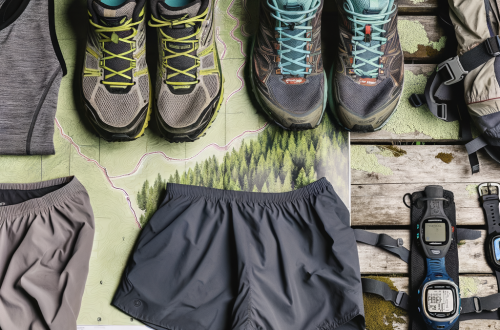
How do I prepare for my first trail run?
What is Trail Running and How is it Different?
Trail running is more than just running off-road—it’s a dynamic, immersive experience that blends fitness with nature. Unlike road running, trail running takes place on hiking paths, forest trails, mountain ridges, and uneven terrain. It challenges your balance, coordination, and mental focus while offering breathtaking scenery and a break from the urban grind.
For beginners, it’s important to understand that trail running involves varying elevation, technical footing, and often slower paces. But don’t worry—it’s not about speed, it’s about the journey.
How to Choose the Right Trail for Beginners
Not all trails are created equal. For your first trail run, choose a beginner-friendly route. Look for:
- Short distance: Start with 2–5 miles to get a feel for the terrain.
- Low elevation gain: Avoid steep climbs until you build endurance.
- Well-marked trails: Choose popular, maintained trails with clear signage.
- Loop or out-and-back: These are easier to navigate than complex trail networks.
Use apps like AllTrails or Gaia GPS to scout trails in your area. Read reviews and check recent trail conditions before heading out.
Essential Gear for Your First Trail Run
Trail running doesn’t require a ton of gear, but a few essentials can make your experience safer and more enjoyable.
- Trail running shoes: These offer better grip and protection than road shoes.
- Moisture-wicking clothing: Avoid cotton; opt for technical fabrics that dry quickly.
- Hydration system: A handheld bottle, hydration vest, or waist pack will keep you fueled.
- Trail map or GPS: Always know where you are, even on marked trails.
- Sun protection: Sunglasses, hat, and sunscreen are must-haves.
- Lightweight jacket: Weather can change quickly, especially in the mountains.
Optional but helpful items include trekking poles, a small first-aid kit, and trail snacks like energy chews or bars.
Training Tips to Get Trail-Ready
Even if you’re a seasoned road runner, trail running uses different muscles and techniques. Here’s how to train smart:
- Start slow: Focus on time on your feet rather than pace or distance.
- Incorporate hills: Practice uphill and downhill running to build strength and confidence.
- Work on balance: Exercises like single-leg squats and agility drills help with uneven terrain.
- Mix surfaces: Train on grass, gravel, and dirt to simulate trail conditions.
- Rest and recover: Trails can be harder on your body—listen to it and take rest days.
Consistency is key. Aim for 2–3 trail runs per week, gradually increasing difficulty as you improve.
Nutrition and Hydration for Trail Running
Fueling properly before and during your run can make a big difference in how you feel on the trail.
What should I eat before a trail run?
Eat a light, carb-rich meal 1–2 hours before your run. Think oatmeal, a banana with peanut butter, or a granola bar. Avoid heavy or greasy foods.
How do I stay hydrated on the trail?
Bring water or an electrolyte drink, especially for runs over 45 minutes. A hydration vest or handheld bottle works well. Sip regularly rather than chugging all at once.
Do I need snacks?
For runs longer than an hour, pack easy-to-digest snacks like energy gels, dried fruit, or trail mix. Practice eating during training to see what works for you.
Safety Tips for Trail Running Beginners
Trail running is generally safe, but it’s important to be prepared.
- Tell someone: Let a friend or family member know your route and expected return time.
- Check the weather: Conditions can change fast, especially in the mountains.
- Carry ID and phone: In case of emergency, always have a way to call for help.
- Watch your footing: Stay alert for roots, rocks, and slippery terrain.
- Be wildlife aware: Know what animals are in the area and how to respond.
Trust your instincts. If something feels off—turn around. It’s better to be safe than sorry.
Mental Preparation for Trail Running
Trail running isn’t just a physical challenge—it’s a mental one too. Here’s how to get in the right headspace:
- Adjust expectations: You’ll run slower than on roads. That’s normal.
- Embrace walking: Power hiking steep sections is common, even for pros.
- Be present: Focus on your surroundings, your breath, and your steps.
- Celebrate progress: Every trail run is a win, no matter the pace or distance.
Trail running teaches patience, resilience, and appreciation for the outdoors. Let go of performance pressure and enjoy the ride.
Common Mistakes to Avoid on Your First Trail Run
Even seasoned runners make mistakes when transitioning to trails. Avoid these common pitfalls:
- Wearing the wrong shoes: Road shoes lack grip and protection.
- Going out too fast: Trails are tougher—start conservatively.
- Ignoring weather and trail conditions: Mud, rain, or snow can make trails dangerous.
- Overpacking or underpacking: Bring essentials, but keep it light.
- Not respecting nature: Stay on the trail, don’t litter, and follow Leave No Trace principles.
Learning from mistakes is part of the journey. Each run teaches you something new.
Final Thoughts: Embrace the Trail Running Journey
Your first trail run is a milestone worth celebrating. It’s not about speed or distance—it’s about stepping outside your comfort zone and into nature. With the right preparation, gear, and mindset, you’ll not only survive your first trail run—you’ll fall in love with it.
So lace up your shoes, pick a trail, and take that first step. The trail is waiting.
#TrailRunningTips #BeginnerRunning #OutdoorFitness #RunningGear #TrailTraining





